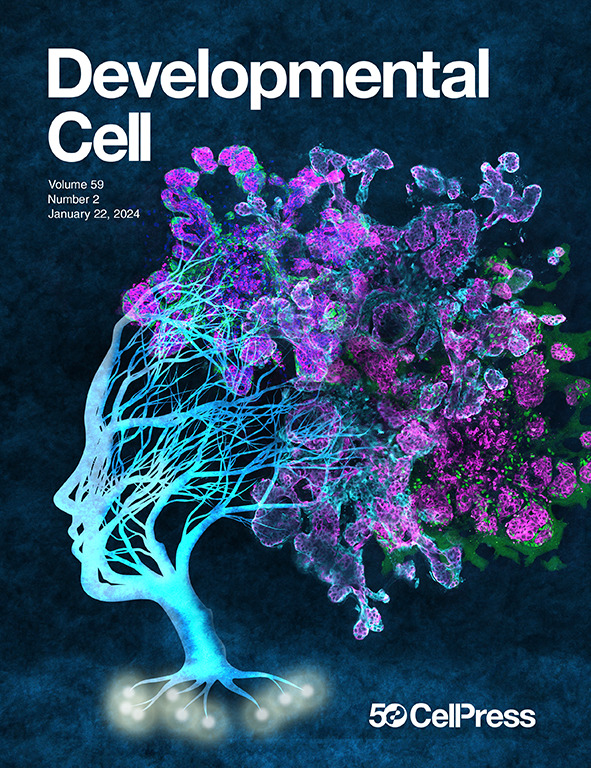EOMES establishes mesoderm and endoderm differentiation potential through SWI/SNF-mediated global enhancer remodeling
IF 10.7
1区 生物学
Q1 CELL BIOLOGY
引用次数: 0
Abstract
Mammalian pluripotent cells first segregate into neuroectoderm (NE), or mesoderm and endoderm (ME), characterized by lineage-specific transcriptional programs and chromatin states. To date, the relationship between transcription factor activities and dynamic chromatin changes that guide cell specification remains ill-defined. In this study, we employ mouse embryonic stem cell differentiation toward ME lineages to reveal crucial roles of the Tbx factor Eomes to globally establish ME enhancer accessibility as the prerequisite for ME lineage competence and ME-specific gene expression. EOMES cooperates with the SWItch/sucrose non-fermentable (SWI/SNF) complex to drive chromatin rewiring that is essential to overcome default NE differentiation, which is favored by asymmetries in chromatin accessibility at pluripotent state. Following global ME enhancer remodeling, ME-specific gene transcription is controlled by additional signals such as Wnt and transforming growth factor β (TGF-β)/NODAL, as a second layer of gene expression regulation, which can be mechanistically separated from initial chromatin remodeling activities.

EOMES通过SWI/ snf介导的全局增强子重塑建立中胚层和内胚层分化潜能
哺乳动物多能细胞首先分化为神经外胚层(NE)或中胚层和内胚层(ME),其特征是谱系特异性转录程序和染色质状态。迄今为止,转录因子活性与指导细胞规格的动态染色质变化之间的关系仍然不明确。在这项研究中,我们利用小鼠胚胎干细胞向ME谱系分化来揭示Tbx因子Eomes的关键作用,从而在全球范围内建立ME增强子可及性,作为ME谱系能力和ME特异性基因表达的先决条件。EOMES与SWItch/蔗糖不可发酵(SWI/SNF)复合体合作,驱动染色质重连接,这是克服默认NE分化所必需的,这是多能状态下染色质可及性的不对称所支持的。在ME增强子重塑之后,ME特异性基因的转录受到Wnt和转化生长因子β (TGF-β)/NODAL等额外信号的控制,作为基因表达调控的第二层,可以从最初的染色质重塑活动中分离出来。
本文章由计算机程序翻译,如有差异,请以英文原文为准。
求助全文
约1分钟内获得全文
求助全文
来源期刊

Developmental cell
生物-发育生物学
CiteScore
18.90
自引率
1.70%
发文量
203
审稿时长
3-6 weeks
期刊介绍:
Developmental Cell, established in 2001, is a comprehensive journal that explores a wide range of topics in cell and developmental biology. Our publication encompasses work across various disciplines within biology, with a particular emphasis on investigating the intersections between cell biology, developmental biology, and other related fields. Our primary objective is to present research conducted through a cell biological perspective, addressing the essential mechanisms governing cell function, cellular interactions, and responses to the environment. Moreover, we focus on understanding the collective behavior of cells, culminating in the formation of tissues, organs, and whole organisms, while also investigating the consequences of any malfunctions in these intricate processes.
 求助内容:
求助内容: 应助结果提醒方式:
应助结果提醒方式:


